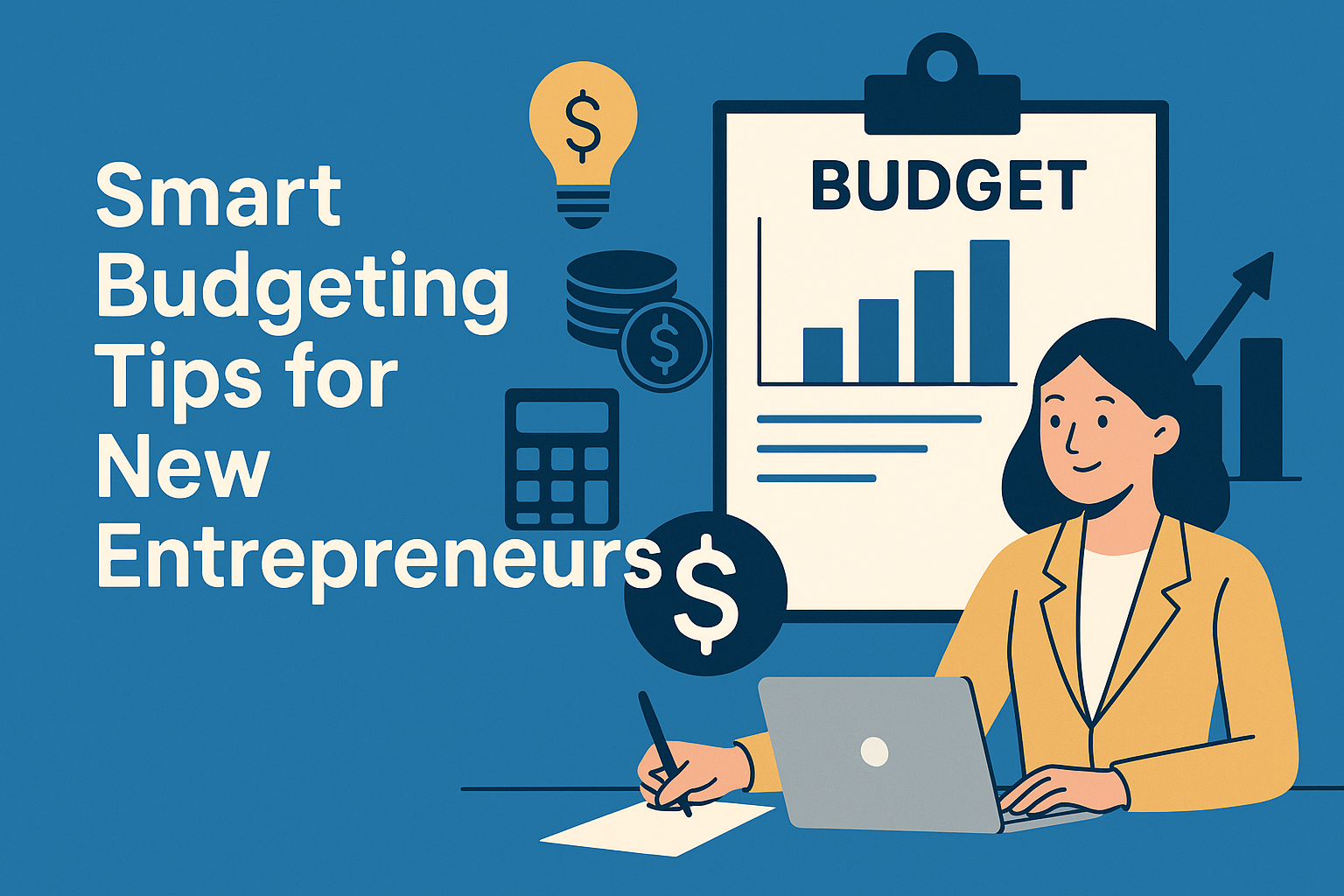One of the most common reasons small businesses fail is poor financial planning. As a new entrepreneur, your ability to manage your budget wisely will determine how far your startup can go. You don’t need to be a finance expert — but you do need to be smart, strategic, and disciplined.
In this guide, we’ll walk through simple, practical budgeting strategies to help you launch and grow your business while keeping your finances in check.
Why Budgeting Matters in the Early Stages
When you’re just starting out, every dollar counts. Without a budget:
- You might run out of cash before you make a profit.
- You could overspend on the wrong areas.
- You may underinvest in essential tools or marketing.
A budget is not about restriction — it’s about control and visibility. It helps you make confident decisions and avoid surprises.
Step 1: List All Startup Costs
Before your business earns money, you’ll likely need to spend some. These initial costs vary depending on your industry and business model.
Common startup expenses include:
- Website setup (domain, hosting, design)
- Branding (logo, templates, brand photos)
- Inventory or materials (if selling physical goods)
- Software or tools (email marketing, CRM, project management)
- Business registration and legal fees
- Marketing and advertising
- Equipment (laptop, phone, camera, printer)
Tip: Don’t forget small recurring costs like subscriptions and online tools. They add up quickly.
Step 2: Estimate Monthly Operating Expenses
After the launch, your business will have ongoing costs. Predicting and planning for these expenses is key to staying afloat in the early months.
Typical monthly expenses include:
- Internet and utilities
- Software subscriptions (Canva, Google Workspace, etc.)
- Payment processing fees (PayPal, Stripe)
- Marketing and advertising spend
- Supplies and materials
- Outsourcing or freelance help
- Taxes and accounting fees
Use a spreadsheet to organize these categories and update them monthly.
Step 3: Calculate Your Break-Even Point
Your break-even point is when your revenue equals your total costs. This is a critical number to know — it tells you how much you need to sell just to cover your expenses.
How to calculate:
Break-Even Point = Fixed Costs ÷ (Price per Unit – Variable Costs per Unit)
Example:
- Fixed costs: $1,000/month
- Product price: $50
- Variable costs per product: $10
Break-even point = 1,000 ÷ (50 – 10) = 25 units
So you’d need to sell 25 units each month just to cover your costs.
Step 4: Set a Realistic Budget
Once you know your costs, decide how much you can afford to spend each month. Separate your budget into categories:
- Essentials (website, licenses, tools)
- Marketing (ads, content creation)
- Product or service delivery (materials, platforms)
- Growth (education, branding, partnerships)
Tip: Leave a buffer — aim to budget only 80–90% of your income and keep the rest for emergencies or reinvestment.
Step 5: Track Every Dollar
Budgeting means nothing if you’re not tracking what you spend. Monitor your actual expenses weekly or monthly to stay on target.
Tools to help:
- Google Sheets or Excel (simple and free)
- Wave (great for small business finances)
- QuickBooks or FreshBooks (for more features)
- YNAB (You Need A Budget — ideal for personal + business)
Color-code or label your transactions so you can spot patterns and waste quickly.
Step 6: Prioritize ROI (Return on Investment)
Not all expenses are bad. In fact, some — like marketing, automation tools, or coaching — can pay for themselves many times over.
Smart investments often include:
- Email marketing platforms (high ROI)
- Courses that teach essential skills
- Freelancers who save you time
- Tools that automate tasks
Ask: Will this expense directly help me make more money or save valuable time?
If not, reconsider.
Step 7: Separate Personal and Business Finances
Mixing business and personal money is a recipe for confusion and tax trouble. Even if you’re a solo entrepreneur, keep things separate.
Here’s how:
- Open a dedicated business bank account
- Use separate cards for business purchases
- Track income and expenses in a bookkeeping tool
- Pay yourself a salary or fixed draw from profits
This practice makes taxes easier and helps you view your business as a professional operation.
Step 8: Cut Costs Without Sacrificing Quality
When funds are tight, it’s smart to be frugal — but strategic. Cut what doesn’t matter, and protect what does.
Ways to reduce expenses:
- Use free tools (Canva, Notion, Google Docs)
- Choose flexible software with free trials
- Hire freelancers instead of full-time help
- Share tools with collaborators
- Automate repetitive tasks
Don’t cut:
- Customer experience
- Branding and trust-building
- Tools that improve productivity or marketing
Step 9: Revisit and Adjust Monthly
A budget is not static. As your business grows, costs shift. Reevaluate your budget every month or quarter.
Check for:
- Unused subscriptions
- Overspending on certain categories
- Opportunities to reinvest
- Seasonal changes in revenue
Use this insight to make better decisions and set smarter goals.
Bonus Tip: Build a Cash Reserve
It’s tempting to reinvest every dollar you make, but don’t ignore savings. A simple cash cushion gives peace of mind during slow periods or emergencies.
Aim to save:
At least 1–2 months of operating costs, even if it takes time to build.
Final Thoughts: Control Your Cash, Control Your Future
You don’t need a finance degree to be financially responsible. With a clear budget, disciplined spending, and regular tracking, you can build a profitable, low-stress business from day one.
Budgeting isn’t about limits — it’s about empowerment. The more you understand your money, the more confidently you can grow your business.
